How Much Are Golden Pearls Worth?

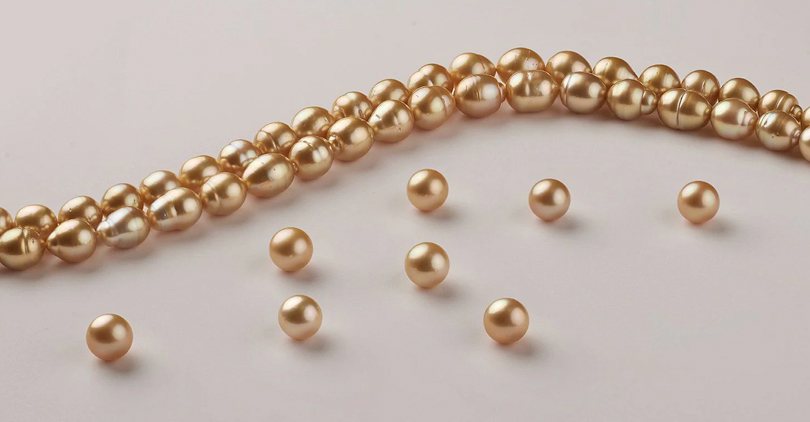
Golden pearls, coated with hues ranging from a mild yellow, 24k gold, bronze, champagne, and rich golden color in between, are known to be the world’s rarest and largest gems with sizes between 9.00mm and 17mm. They are formed by the golden-lipped saltwater oysters, Pinctada maxima, found on the Palawan coast in the Philippines and also in Indonesia and Australia.
Brief Introduction to Golden Pearls
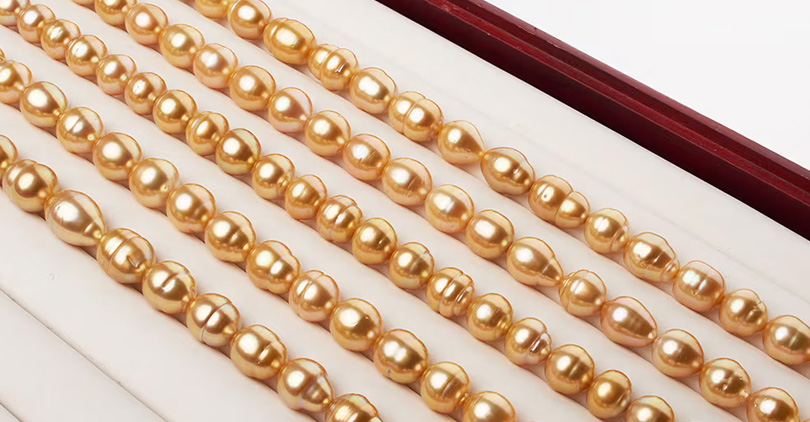
Although they are relatively new, golden pearls are pricey, and for a good reason—they are large, ranging from 9mm to 17mm, they have a thick nacre, and they come in luxurious colors. Their golden tones are completely natural and do not require any treatment to have their luxurious surface.
The main golden pearls are South Sea pearls, but there are also others, like golden Akoya pearls and golden freshwater pearls. However, most of these two variants are color-treated, which means they are not naturally gold like golden South Sea pearls.
Unsurprisingly, these gems are not all valued alike; some are more valuable than others. Here’s why: Pearls with a thicker hue that resembles gold attract a higher price than those with a pale champagne color. Besides their large sizes, golden pearls usually have very thick nacre. Also, naturally, gold pearls cost more than color-treated golden pearls. So, it is no surprise that they are becoming more popular among jewelry designers.
How Much are Golden Pearls Worth?
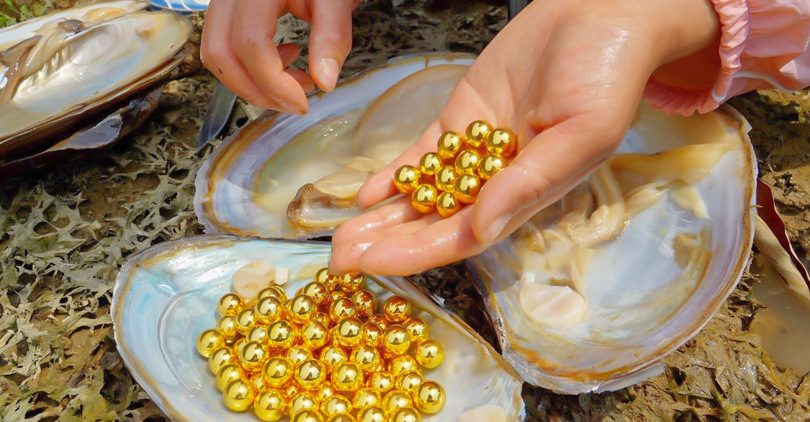
Golden South Sea pearls are considered the "Rolls Royce" of saltwater pearls. They are the only pearls with a naturally golden color. They are also rare and large. And like the Rolls Royce, you can expect them to cost a lot. But just how much can they cost?
Are Golden Pearls More Expensive?
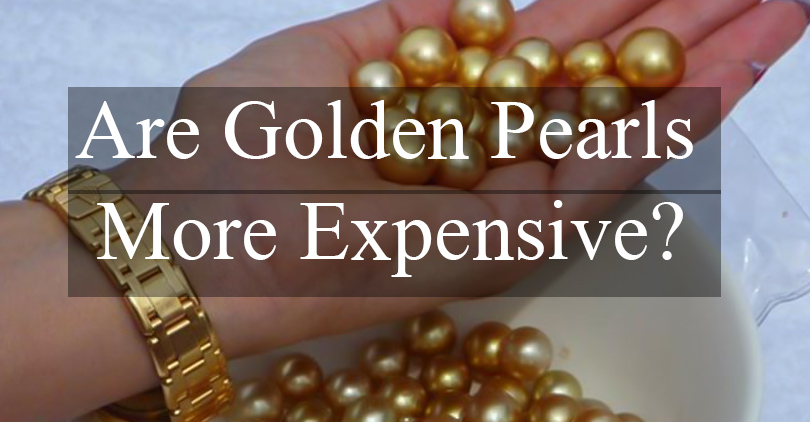
Yes. They take about four years to grow. With all value indicators in place, you can expect to pay anything from around US$50,000 to US$100,000 for a perfect strand of large-sized golden pearls. That is far more valuable than a strand of Akoya pearl jewelry, which can cost around $300 to $10,000.
It is also more expensive than a strand of Tahitian pearls, which, depending on their quality, can cost around US$1000 to over US$30,000. It is also more valuable than a freshwater pearl strand, which costs around US$50 to US$2,000.
Price Variation Due to Origins

Like white South Sea pearls, South Sea Golden Pearls are usually larger than other saltwater pearls or even freshwater pearl types. Their host shell, the gold-lipped oyster Pinctada maxima, takes an average of 3 to 4 years to produce them. The long wait period makes them rare, which increases their prices.
Golden pearls mostly come from Indonesia and the Philippines. Combined with how rare they are, they tend to be more expensive than Akoya golden pearls and other types of golden pearls. Another reason for their higher value is that they are naturally golden in color, while other golden pearls are color-treated to make them have a golden color.
Factors Affecting Golden Pearl Worth

Like other pearl types, some factors affect the worth of golden pearls. These factors range from the thickness of their nacre, luster, pearl size, and surface quality. Without these factors in place, it is nearly impossible to ascertain the price of a golden pearl.
Pearl Size
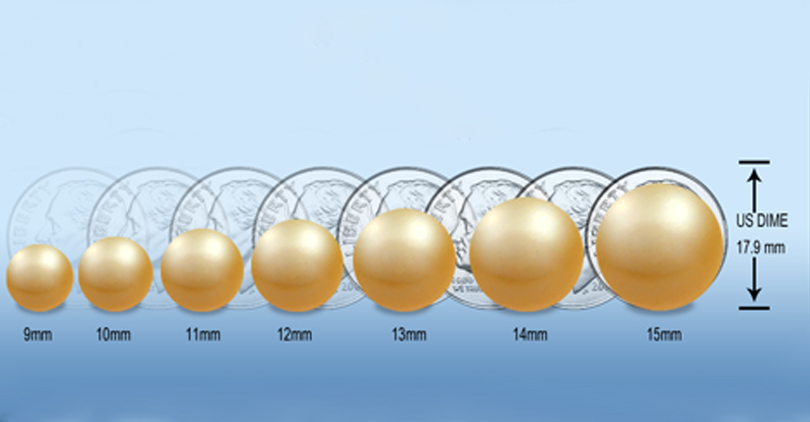
The worth of pearls largely depends on their sizes. Golden pearls are the largest in the world, with sizes ranging between 9mm to 17mm and sometimes above. They take around four years to form. During this time, the farmers tend to invest more as the oysters need to be nurtured, protected, and maintained. From common knowledge, we know that the larger the size, the more the pearl is valued.
Shape
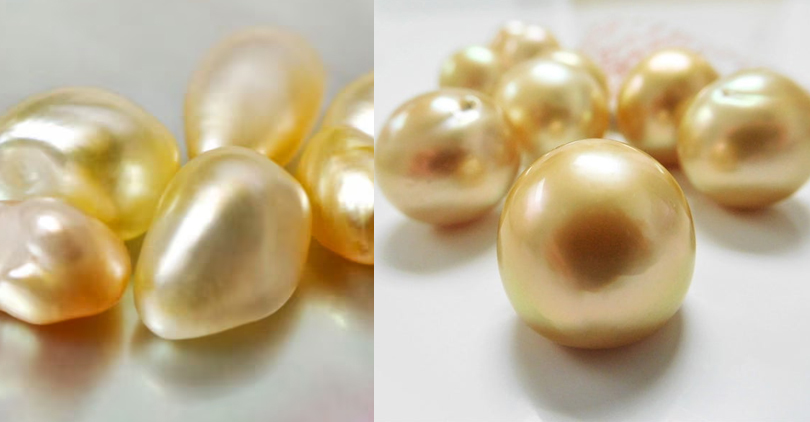
While perfectly round golden pearls are the most sought-after and highly prized, non-round ones, especially baroque-shaped ones, are also valuable due to their unique and organic shape.
Pearl Luster and Nacre Quality
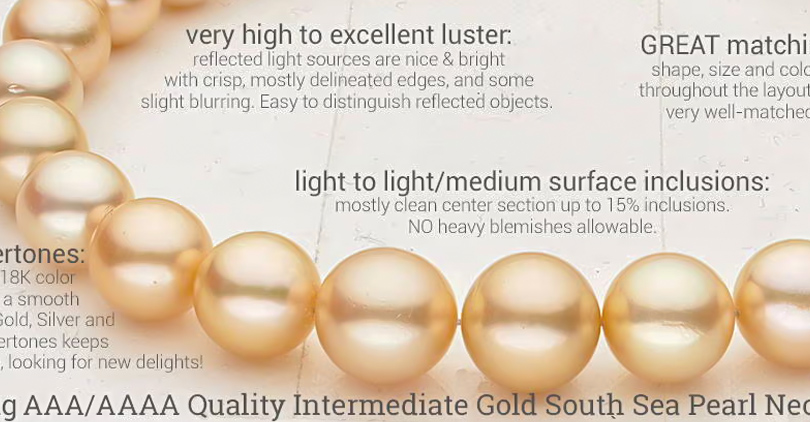
Luster refers to the sheen or radiance of a pearl. It is one of the factors that determine the worth of pearls. The luster of a pearl is influenced by the thickness of the nacre, which not only makes the pearl more valuable but also gives it a hard surface. Pearls with high nacre quality are expensive because they are hard to scratch and more tolerant of wear and tear. Thin nacre pearls are not so durable, hence less valued. Golden pearls have very thick nacre of 1.5mm to 2mm, which makes them resilient, strong, and long-lasting.
Pearl Surface

Although pearls are naturally not perfectly smooth and blemish-free, high-quality pearls usually have fewer blemishes, like pits and wrinkles that are not visible without the use of magnifying instruments. Where a pearl has visible irregularities like cracks and gaps, it would attract less value for it. Pearls with relatively clean surfaces and invisible blemishes attract higher prices.
Conclusion

It is amazing how a living organism can produce such exotic gems as golden pearls. Their luxurious look, charm, and value make them a must for every pearl lover. So, whether you want them as an investment choice or a fashion piece, golden pearls are the golden choice for you. They speak about longevity, class, and wealth. When you decide to acquire these luxury gems, you can find the best ones in the Whitevictoria collection.
FAQs
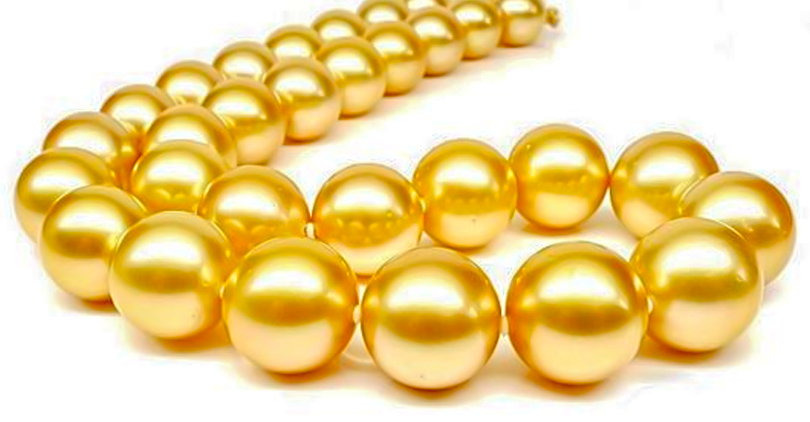
How Rare are Golden Pearls?
It takes the golden-lipped oyster at least 3 to 4 years to produce golden pearls. This makes them rare, and that also increases their value as you cannot mass-produce them, like freshwater pearls.
How Do You Tell If Your Pearls Are Expensive?
The thick nacre and great luster, combined with the size and a clean surface with invisible blemishes, indicate that your pearls are expensive. When all these factors are present, it is easy to tell that your pearls are expensive.
Is Golden Pearl Jewelry a Good Choice for Investment?
Buying golden pearl jewelry as an investment choice will always be a great idea because the acceptance and demand for high-quality gems will keep growing.
What color pearls are the most expensive?
Gold-colored pearls, also known as Golden South Sea pearls, are the most expensive pearls. Their price is based on their size and profound rarity. They are cultured in the Philippines.
How to Care and Maintain Golden Pearls?
To maintain your golden pearls, gently wipe them with a soft, fiberless cloth after every use. Keep them from heat, water, and harsh cleaning chemicals. Let your pearls be the last thing you wear to avoid contact with oil and perfumes. Lastly, store your pearls in the right way and avoid mixing them up with other jewelry. Instead, keep them gently in a soft linen cloth or partitioned jewelry box.


2 Comment(s)
I recently inherited some things a nd among everything was some pearls. Inside the box with a note that said hlthe pearls were non cultured deep water south sea pearls. Abd it said very valuable in quotation. I startrd researching the pearls and they are golden sputh sea pearls and highly valuable. Ok my wuestion is i habe no use for pearls norna yone to give them to and inwould like to sell them. Can anyone point me in the direction of a reputable buyer
There so beautiful oh my goodness I wish I had some
Leave a Comment